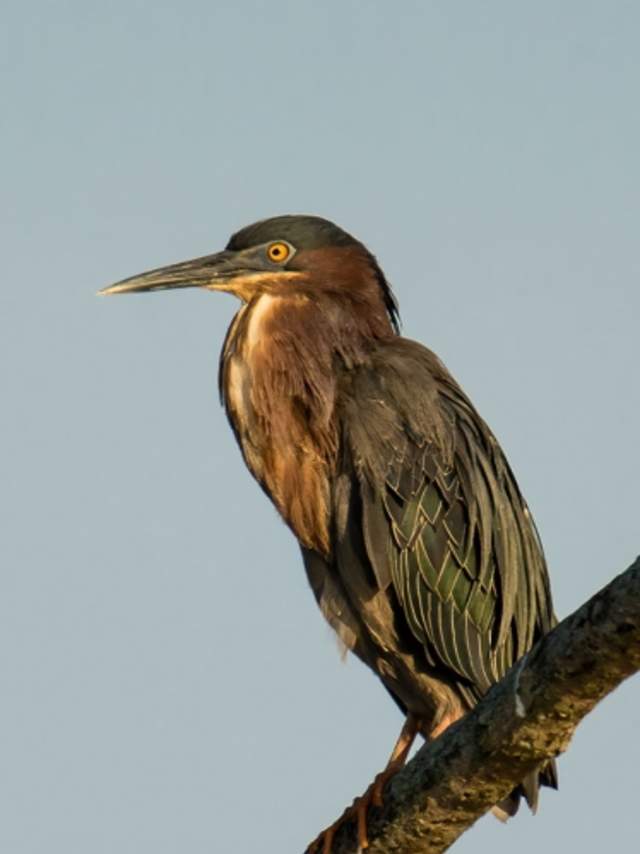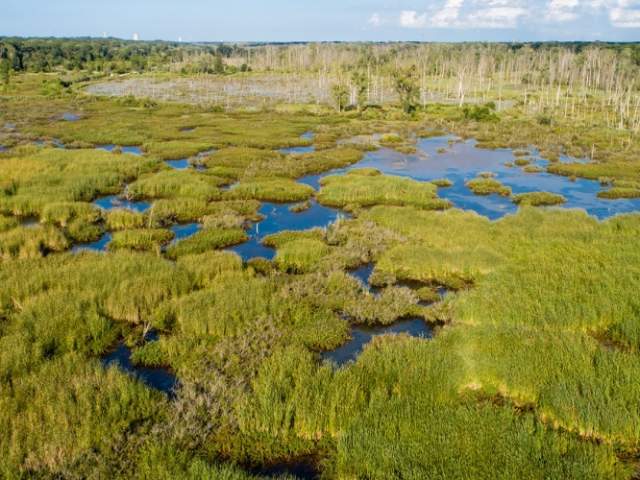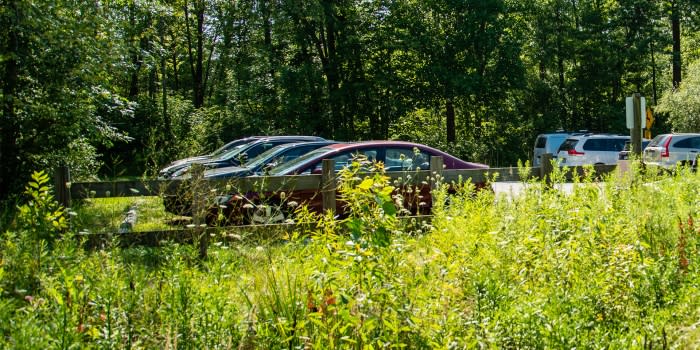Discover Great Marsh Trail
The Great Marsh Trail is 1.2 miles long and runs through the largest interdunal wetlands in the Lake Michigan watershed. The marsh is a vital habitat for plants and animals, and visitors can take advantage of the accessible observation deck to see some of the hundreds of species of birds that visit during their long migrations or make the area their home. Separated from Lake Michigan by a majestic dune ridge, the trail is only minutes from the shore.
While once people believed that wetlands like the Great Marsh should be drained for development, today we understand that they serve vital functions in preventing flooding and erosion, and helping to protect our drinking water.


The Geological Story of Great Marsh Trail
During the last ice age, glaciers advanced and receded, leaving behind the massive dune ridges that run along the southernmost shore of Lake Michigan. Water from melting ice and enormous waves was separated from the lake by the mighty dunes, and formed the basis for the Great Marsh. Unlike swamps, which typically include a variety of trees, the wet soil that makes up the marsh support a variety of shrubs, bushes, and grass.
This remarkable wetlands habitat once spanned twelve miles. As the region was settled, farmers and developers drained much of the wetlands. Today, the National Park Service and other environmental organizations work hard to preserve this important habitat.
Birds You May See
Beautiful Birds of Great Marsh Trail
The Great Marsh Trail is a seasonal home and waystation to a dizzying array of waterfowl and migrating birds. Majestic sandhill cranes will stop to rest and fish in these waters during their long fall migration, along with other graceful birds like great egrets and blue herons. Around them swim mallards and wood ducks. Visitors to the Great Marsh Trail may hear the loud chittering call of kingfishers, brightly colored birds that thrive near water, and 36 different species of warblers nest or pass through the marsh. Osprey and bald eagles have even been spotted in the area. Birdwatchers can see or hear literally hundreds of species of birds along the Great Marsh Trail.

Plants You May See

Marvelous Plants of Great Marsh Trail
Thanks to ongoing restoration efforts, the Great Marsh Trail not only provides an important habitat for birds, but several native plants also thrive here. These include wildflowers like the small but lovely forget-me-nots, golden ragwort, and the appropriately named skunk cabbage, a remarkable plant whose distinctive odor allows it to attract pollinating flies even in winter.
You may also spot the beautiful yellow marsh marigolds, but don’t let their attractive appearance fool you. These attractive flowers are poisonous.

Amazing Animals of Great Marsh Trail
Beavers were once rare in Indiana, after being hunted for their pelts in the 19th century. These shy and busy animals were reintroduced in 1935 and are now thriving. Evidence of their work can be seen in the Great Marsh, both in their dams and in the chewing marks left on tree stumps. If you think you see a beaver, be sure to take note of its tail! Muskrats also call the area their home and, while they look similar to beavers, have long, thin tails.
Snakes and turtle species also can be seen at Great Marsh Trail. You might see turtles as small as a painted turtle or as large as a snapping turtle!
Right off the main parking lot is a patch of flora that draws monarchs, praying mantises, and hawk moths. Hawk moths look like small hummingbirds when they fly.
Noteworthy
The Great Marsh once stretched from Gary to past Michigan City, Indiana. Much of the marsh was drained for agricultural and residential use in the early 1900s. The National Park began the restoration of the Great Marsh in 1998, and in the decades since, fens, sedge meadows, and wet prairies are recovering.
Although all of the land that makes up the Indiana Dunes is crucial to the survival of hundreds of species of birds, the Great Marsh is particularly important. Four out of five of them take advantage of the shelter provided by this precious wetland.
To learn more about protecting the Indiana Dunes, read our Love & Protect page.

How to Help
We are all responsible for protecting our parks for future generations. The Indiana Dunes, as a whole, is one of he most biodiverse areas in the United States. Here are some tips to help you limit your impact on the natural habitats in the dunes area.
Get Involved
Be the Change — Volunteer! Get more involved with the Indiana Dunes! There are many no-hassle, drop-in volunteer opportunities available for everyone. Just show up!
Love & Protect the Dunes
Each of us who visit the Indiana Dunes can also help protect natural heritage, biodiversity, and local culture by taking a few simple steps.
Visit Off Season
This trail is a perfect birding location thanks to being the largest wetland complex in the Lake Michigan watershed.
During the spring and fall migration birders can spot herons, egrets, sandhill cranes, warblers, and red-winged black birds. Other birds that rest in the Great Marsh Trail during the migration season include kingfishers, tree swallows, and rusty blackbirds.

Plan Your Visit
- 500 S. Broadway Ave.
- 219-395-1882
Just a short stroll to an accessible observation platform provides a great view of this recently restored wetland. Wading birds like herons and egrets and songbirds such as warblers and…
What to Expect
Guests can choose from two small parking lots at the Great Marsh Trail. The south lot features several gravel spaces for 8–10 vehicles and leads visitors to the main trailhead. The north lot features a paved parking lot (with one handicap space and one regular space) which leads visitors to a wheelchair-accessible trail to the observation deck. The deck offers a spectacular view of the marsh and the birds that inhabit it.
Hikers can expect grassy trails with some sections of packed dirt along this 1.3 mile trail. Come prepared to wear appropriate footwear ideal for wet conditions as the trails can become muddy and slippery after a heavy rainfall.

Main Lot and trailhead (south):
- Free to enter
- Open daily from 6:00 am to 11:00 pm
- 1.3 miles
- No drinking fountains
- No restrooms
- Not wheelchair accessible
- No handicap parking

Accessible Lot (north):
- Free to enter
- Open daily from 6:00 am to 11:00 pm
- .2 miles accessible path to boardwalk platform
- No drinking fountains
- No restrooms
- Wheelchair accessible
- One handicap parking space
























